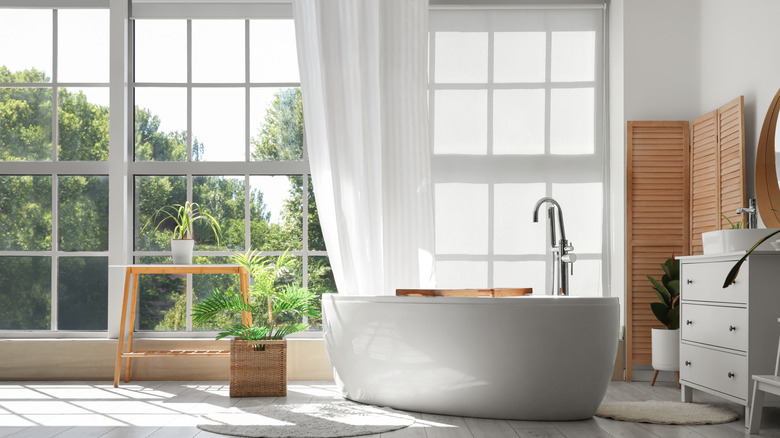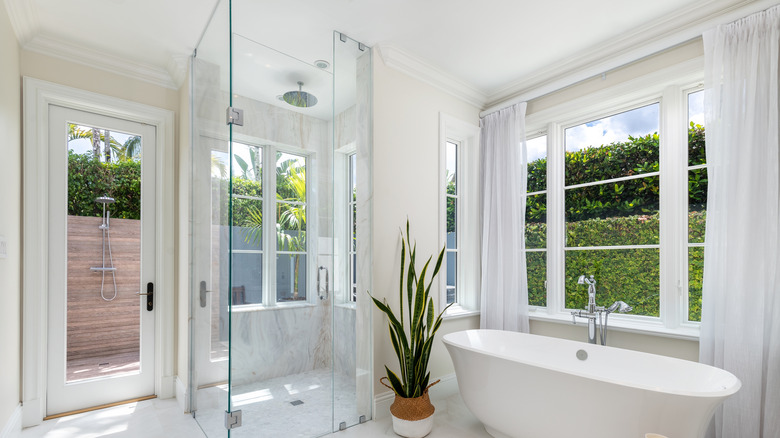Can Adhesive Curtain Rods Hold Up In A Wet Bathroom?
We may receive a commission on purchases made from links.
If you want to enhance your bathroom with drapery without fussing over tools and complicated installation, stick-on curtain rods are the way to go. Adhesive curtain rods are easy to install and leave no damage behind, which is especially ideal if you live in a rental. However, when it comes to using them in the bathroom, a few factors will determine how well they hold up over time. These include the condition and the material of your walls, the weight of the curtains, and the amount of moisture in the space. Excess humidity has the potential to weaken the adhesive bond, which is also the reason why you might not want to use peel-and-stick wallpaper in the bathroom. As long as you take the necessary precautions, though, stick-on curtain rods can handle the typical moisture level of a bathroom.
Before you give adhesive rods a try, it's worth mentioning that there are several other ways to hang curtains without drilling. For example, if you have metal window frames, you may find that magnetic curtain rods are a better solution. They require no special installation or tools and can simply be clicked into place. Tension rods are another popular option for bathroom window coverings. Tension rods use an adjustable spring to hold the rod securely in the window frame without needing a wall-mounted holder, but these are best suited for lightweight drapery for small and narrow windows. If adhesive curtain rods are the way you want to go, let's dive into everything you need to know to get the best results.
How to install adhesive curtain rods in a bathroom
First and foremost, be sure to look for self-adhesive curtain rods that are water-resistant. Peel-and-stick curtain rods work on most surfaces, including ceramic tile, glass, metal, and drywall. The adhesive may not be as effective on textured surfaces like fabric, plaster, concrete, and exposed brick. Wallpaper should also be avoided as it may not support the weight of the curtain. Check the product recommendations before purchasing to make sure the adhesive is compatible with your walls.
If your bathroom is freshly painted, wait at least one week for the paint to fully cure before using any adhesive on the walls. Ensure that the walls are clean and free of soap scum and dust before installing your curtain rod. If possible, hang it away from areas where it might get wet, which could reduce the effectiveness of the adhesive over time. Finally, opt for drapery made of lightweight fabric such as cotton, and make sure the curtains you choose do not exceed the weight limit that your stick-on rod can handle.
If you happen to have a non-adhesive curtain rod that works well with your space, there is one quick and inexpensive option — consider using Jumbo Command Hooks. They hold up in wet environments such as bathrooms and shower walls, and there are various styles available online that are more decorative than the standard white plastic ones. Just keep in mind that you run the risk of using Command Hooks all wrong by skipping the necessary steps for installation, such as cleaning and prepping the area with isopropyl alcohol first.

